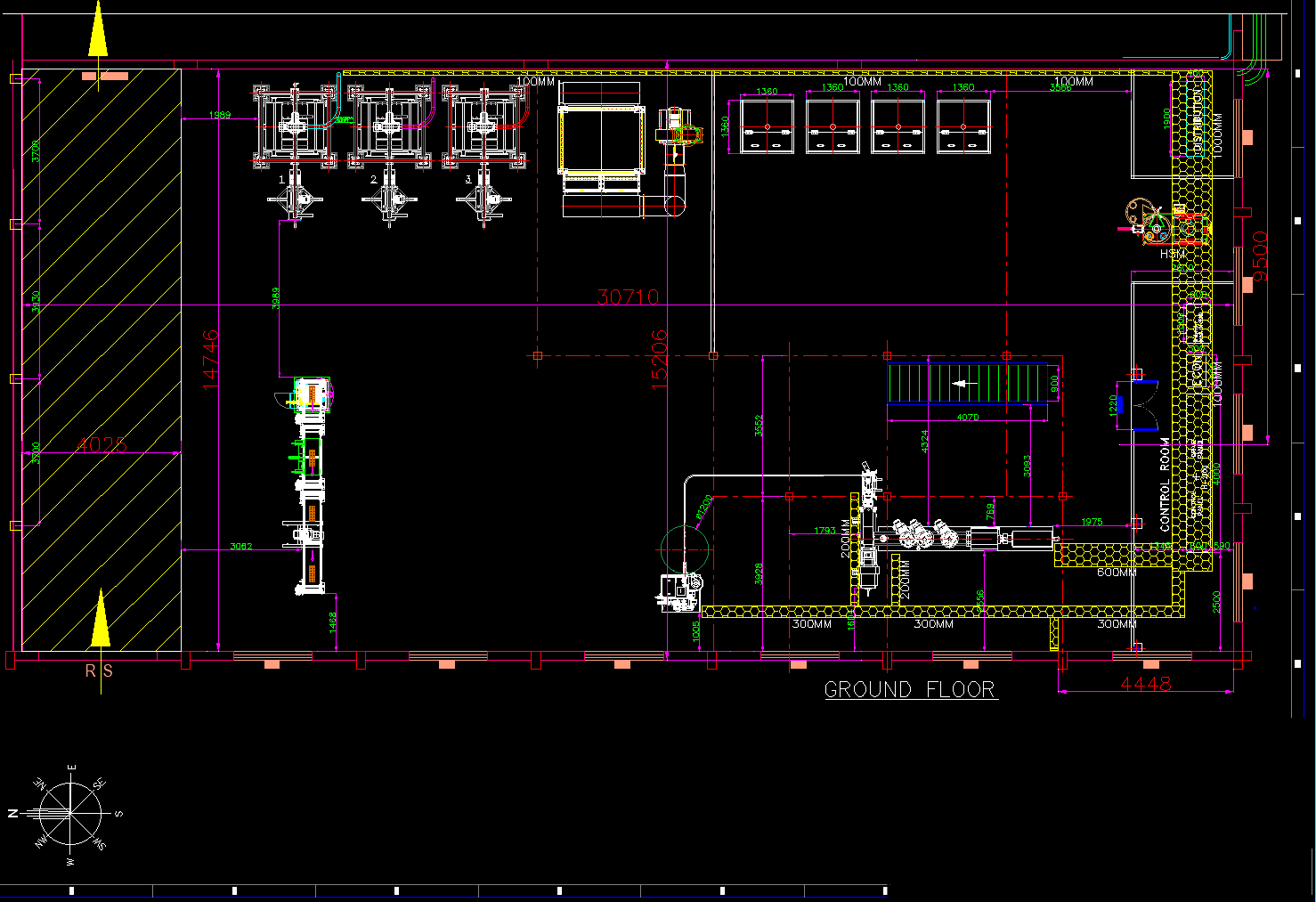In the polymer compounding industry, plant layout is a critical element that significantly impacts operational efficiency and product quality. Plant layout involves the strategic arrangement of industrial facilities, including spaces for material movement, storage, supporting activities, and equipment. Effective plant layout is essential for optimizing the production process, ensuring seamless material handling, and maximizing the use of available space.
In polymer compounding, an effective plant layout is crucial for optimizing operational efficiency and ensuring high product quality. One of the primary objectives is to minimize material handling and transportation. By strategically arranging equipment and storage areas, a well-designed layout reduces unnecessary movement of materials and minimizes handling costs, leading to smoother operations and cost savings. Additionally, maximizing floor space utilization is essential, as polymer compounding plants require ample room for equipment such as extruders, mixers, and cooling systems. An optimized layout ensures that these components are positioned effectively, making the best use of available space and accommodating future expansion needs.
Another critical aspect is enhancing material flow throughout the production stages, from raw material feeding to blending and extrusion. A streamlined layout ensures that materials move seamlessly between workstations, reducing time and costs associated with material transport and maintaining consistency in product quality. Moreover, an efficient layout increases productivity by reducing downtime and improving workflow, while also optimizing the use of machines, manpower, and services. It facilitates easy maintenance and inspection, extends equipment lifespan, and supports future expansion. Finally, a well-organized layout enhances safety and worker morale by providing a safer work environment with proper lighting and ventilation, which contributes to higher job satisfaction and productivity.
Indicators of an ineffective plant layout include several critical inefficiencies that hinder operational performance:
- Overcrowded areas with machines, materials, and personnel often lead to delays and operational bottlenecks.
- Excessive work in process can extend production times and raise costs.
- Poor space utilization creates wasted areas that impede efficiency.
- Extended material flow paths increase handling costs and prolong production cycles.
- Increased manual handling by skilled workers can drive up costs and introduce quality issues.
- Higher maintenance time due to inefficient layouts results in longer downtimes.
- Extended production times, higher accident rates, and challenges in supervision further underscore the negative impacts of a poorly designed layout, complicating management and control.
A well-structured plant layout is fundamental to the success of polymer compounding operations. By focusing on minimizing material handling, optimizing space usage, and enhancing productivity, manufacturers can ensure efficient production processes and high product quality. Addressing the signs of poor layout and implementing strategic improvements will contribute to a more effective, safe, and productive compounding plant.

